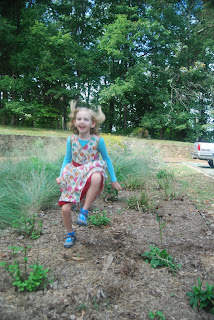Our local yarn shop, The Needle Lady, brought in Jane Slicer-Smith, an Australian knitter, a couple of years ago to give a series of workshops. I attended one on fitting. It is only the second knitting class that I have ever attended, and it was well worth it. Jane is a master at fitting sweaters, something that has always been hit or miss with for me. She brought a huge selection of sweaters to try to see which ones we liked and how they fit us. It was great fun to try on all these beautiful sweaters. I love the one on the cover of the book and will definitely knit it one of these days, but I started with the Metro Coat because I felt I needed to start using up some of my stash. I had a lot of the light grey silk/wool yarn in my stash, so I then chose colors to go with it.
The colors I chose were a tweeded black, dark grey and camel and used green and bright blue as the accent colors. I started the coat, but the going was very slow. Then, I had a major back injury. I herniated a disk in my back and was unable even to stand up for more than a week. Even then, I could only stand up for very short periods of time without severe pain. Once I got through the worst pain and was able to get off the very strong pain killers, I was still bed bound for 3 weeks. So once I could sit slightly propped up, I started knitting.
This coat is not hard to knit, but does require some attention to pattern. This is the first sweater that I have knit that has used bobbles. My first attempts were not so successful, but I got the hang of it. Mainly, it was a challenge managing all of the intarsia strings and untangling them periodically, but otherwise, it is a pretty straightforward project.
Because it is such a big coat, I decided to line it to hide all the color changes and to help hold its shape. I picked a beautiful cotton fabric for the main lining, and used a slick rayon for the sleeves to help get them on and off easily. I covered the seam in a velvet ribbon.
Here is a photo of the back of the sweater, and one with me wearing it. It is quite warm and works well for 40'ish type temperatures. I get lots of compliments on the sweater, and often have people stop me to comment on it and to ask where they can get one like it. I love this sweater and I am tempted to do another one but shorter. However, life is too short to knit the same thing twice, so I think I am off to do a different project now.



















































